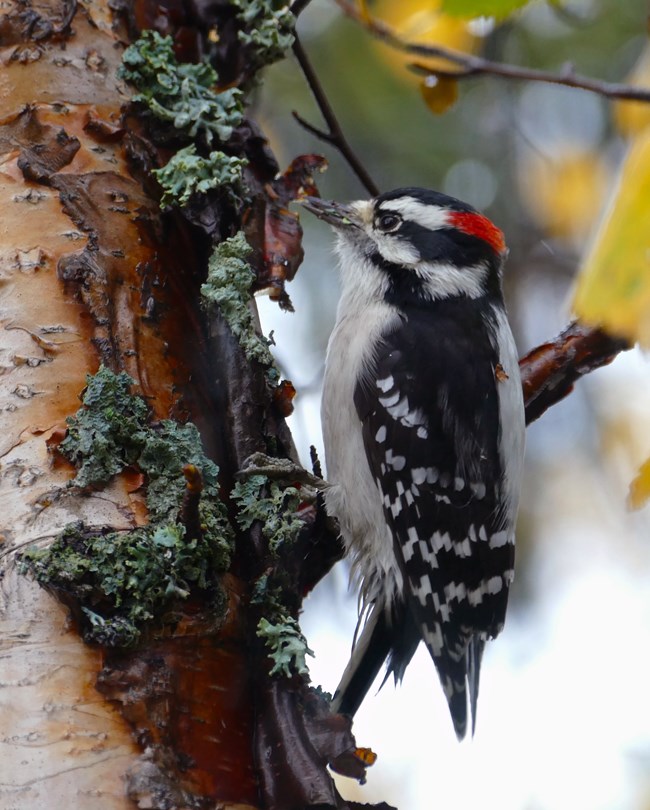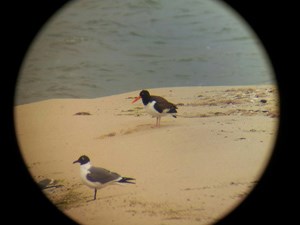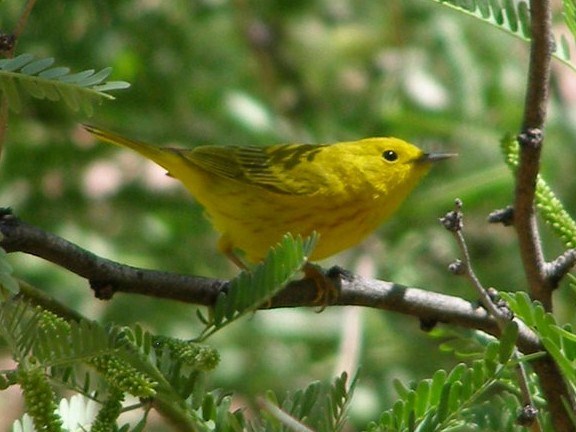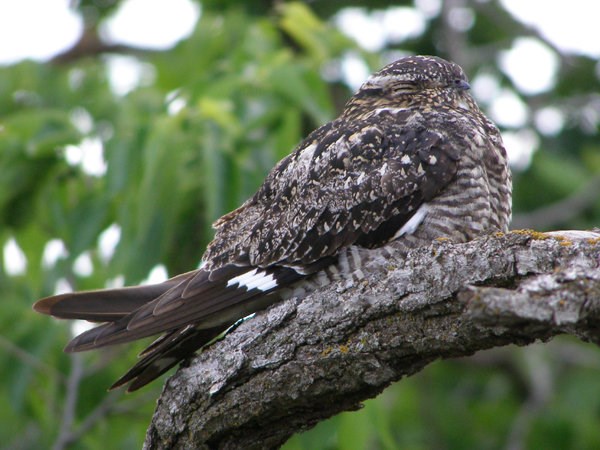Last updated: August 8, 2025
Article
Birding For Beginners

NPS / J. Mills
Why Bird?
If you're curious about nature and want to learn more about what's around you, birding is a great skill and a fun hobby. When you start to take note of the birds around you, you might find yourself more perceptive of other things. You might notice sounds you previously overlooked. You might start to notice small details in your surroundings, like individual trees, insects, fruits, and flowers. You might find yourself more in tune with the passing of the seasons. Birding can be a gateway into recognizing and appreciating a wider world that was there all along.
Here are four great reasons to get into birding today:
- Birding is very low-cost. After the initial investment on a pair of binoculars and an ID guide, the only costs are what you spend on travel and entrance fees.
- You can bird anywhere, anytime. It's a hobby you can do in your back yard or take with you around the world.
- It's very rewarding to see something new, to be able to name what you see, and to make discoveries. It's also only as much work as you want it to be.
- Birding can also be a social activity (or not). Beyond being a fun family activity, birding clubs and park rangers offer programs where you can meet other people and look for birds together, pooling knowledge and providing more pairs of eyes and ears. See our list of upcoming bird programs in national parks. Even informally, birders generally "flock together" and share notes. But if you'd rather keep to yourself, there's plenty of space to do that, too.

Courtesy Nathan King
What You Need
Birding is a low-cost hobby that you can take with you anywhere in the world. There are only three things you need to get started:
-
Bird guide
-
Binoculars
-
Positive attitude
1. Choosing the right bird guide
Bird guides are essential for learning and identifying bird species. Today, there are a number of websites and mobile apps that can help you identify birds by sight and sound. Printed guides offer their own advantages.
Guides are available in all shapes, sizes and formats. So which is the right one for you? You might find the answer changes depending on the circumstances!
A guide to printed bird guides:
| Skill level | Format | Pros and Cons |
|---|---|---|
| Novice | Bird ID card | Lightweight, good for children, but only shows a small number of species. |
| Beginner | Arranged by color | Lightweight, less overwhelming if you're just starting to observe birds. Partial list of species. Your interpretation of color may differ from the book's interpretation. |
| Intermediate | Arranged by shape | Typically a complete list of species presented as photographs or illustrations. |
| Experienced | Arranged taxonomically | Most complete information and descriptions based on classification. May have best illustrations with annotations. Heavier, less portable. |
Mobile apps are also very useful to help you ID and log the birds you find. Apps may include technology to identify bird sounds, or sound clips you can use to help confirm a bird ID, greatly increasing your ability to identify birds that are out of sight. One benefit is that you were likely to have your phone in your pocket anyway, so this is no additional weight in the field. However, a book may make browsing a bit easier.
A number of websites also help with finding up-to-date bird information, photos, and sound clips, which are a huge advantage over printed books. Rocky Mountain National Park has a great collection of bird sounds from the mountains of Colorado.
Further down on this page, we have lists of bird species by park. These lists may also be available in park visitor centers.
Which guide is right for you? As your skills progress, you may find your tastes changing. Start with the basics and work your way up. National park visitor centers typically stock bird books for a variety of skill levels; browse a bit find what works best for you.

NPS
2. Binoculars and spotting scopes
Binoculars come in all shapes and sizes. Generally, smaller binoculars are lighter but have less magnification. Larger binoculars usually have more magnification but are heavier. Try out different sizes to find out what fits best.
Binoculars each have a specification, such as "10x50." This number tells you about the lenses on the binoculars:
- The first number tells you the magnification. A "10x50" binocular will magnify an object 10 times its actual size.
- The second number tells you the size of the objective lens, the lens furthest from your eye. A larger objective lens gathers more light, which means the image will be clearer, especially in low light. A "10x50" binocular has a 50 millimeter objective lens.
A spotting scope is like a telescope. They provide the most magnification but are the bulkiest. If you're going to be staying in one spot for a while, spotting scopes are a great option.
There are other features and factors to consider, but magnifying power is the main criteria to focus on (pun!). Your retailer can help you choose the right fit for your needs.
3. Positive attitude
The right attitude is the final supply you will need. Presence, curiosity, and patience will all help you start birding.
Be present while you are in nature. Take note of your surroundings. What's around you right now? Feel the air, hear the sounds, and the natural world will reveal itself to you in surprising ways. As John Muir said, "In any walk with nature, one receives far more than he seeks."
Curiosity is a key ingredient. To become a better birder, you can explore different habitats, different seasons, and different places. You should want to be able to name the birds you find, and learn about them in your bird guide.
The last ingredient is patience, both with yourself and with the birds. The birds don't always cooperate, even for experienced birders. For you, there are a lot of birds to get to know. You will get better with practice. Just keep going!

Courtesy Nathan King
How to Bird
Location, time of day, weather, and time of year can influence what types and numbers of birds you might observe.
Get to know your regulars. Some birds in your neighborhood are common, year-round residents. By learning to identify these birds by sight and sound, and by recognizing their habits (How do they move? What do they eat? What do they sound like?) you will better be able to notice when something unusual comes along.
Find a good spot. You might go for a drive through a wildlife area, walk on a trail, or sit in one spot and wait for the birds to come to you. One key is to find a place where two habitats meet, such as the edge of a forest and a meadow, or where muddy shorelines meet the water. Finding a spot where birds can find food and water can increase your chances of finding interesting species.
Choose the right time of day. If the early bird gets the worm, then the early birder needs to be up even earlier. Many birds sing more at dawn and dusk because the cooler air and lower wind helps their song carry farther. These songs are not only nice to hear, they announce the presence of a bird you may not yet be able to see. While many familiar birds are active during the day, owls, nightjars, and many others become active in the evening and into the night, and migratory birds often travel by night too! So you don't have to be a morning person to be a birder.
Time of year matters. Birds go where the food is, and for some that means moving from the Arctic to the Antarctic and back every year. Though you will likely have some year-round resident birds, some birds in your neighborhood may only appear in the summer, others only in the winter, and still others might only be glimpsed during spring and fall migrations.
Blend in. Camouflage is not required, but by wearing inconspicuous colors and being quiet, you'll avoid scaring birds away. You will likely find you will see more birds while staying still than you will walking along a trail!
Be patient. Don't be too frustrated when you can't ID a bird; the challenge is partly why the activity is rewarding.
Practice with your binoculars. Try looking directly at a point in the distance and bring your binoculars up to your eyes. Are you still looking at the same spot? Practice makes perfect.
Take notes. Try writing a list of the birds you see, and where and when you saw them. If you keep a logbook, over time, you'll be able to anticipate the movements of birds during migrations. Some birders like to keep a "life list," recording every species they have seen in the wild.
Practice! You don't have to actively be looking for birds to practice birding. Take note of the birds you see and hear on your walk to work or school, while you're looking out your kitchen window, or while you're doing other activities outdoors. You might notice other interesting things, too!
Where to Bird
This map shows national parks that have at least one webpage about birds in the park. You might also try some of the excellent birding locations in the national wildlife refuge system.
NPS / Nathan King
Bird Responsibly
Take care of yourself. Bring water and snacks. Wear long, loose fitting sleeves and pants to protect from the sun and biting insects. Protect yourself from the sun by wearing a wide-brimmed hat, and sunscreen on any exposed skin.
Be aware of your surroundings. Don't walk with binoculars over your eyes - you could trip!
Take care of your environment. While feeding birds in your back yard is a fun way to see wild birds, remember that feeding any wildlife in national parks is against the law.
Avoid approaching or disturbing nesting birds, their eggs, or their nests. If you find juvenile birds out of the nest, leave them alone. Nature knows best, and their parents are nearby.
Using bird calls is typically illegal in national parks.
Bird Photo Gallery
Bird Checklists
Select a Park:
Select a Species Category (optional):
Visit NPSpecies for more comprehensive information and advanced search capability. Have a suggestion or comment on this list? Let us know.
